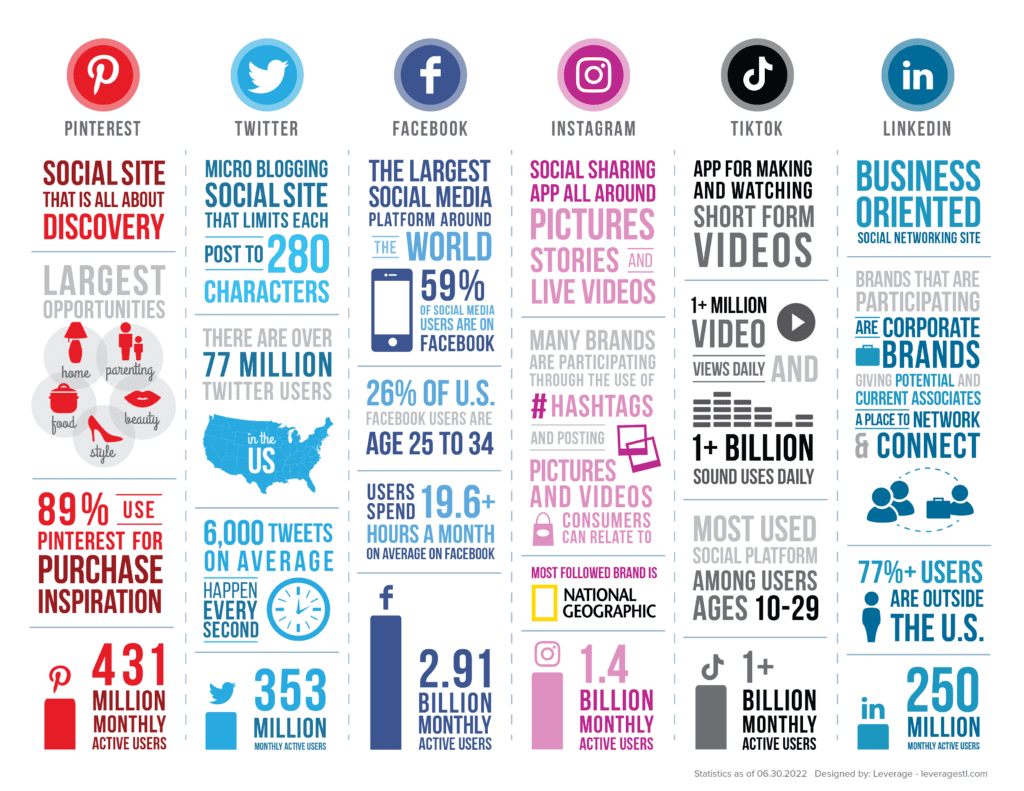In Part 1, we told you how jurors are changing and the challenges these changes present. We begin Part 2 with some examples of new media developments that help explain why jurors expect more from your visual presentations. We will then offer a quick refresher on the foundations of any good graphic—so we can build upon them in Part 3.
What Your Trial Graphics Are Up Against
1) Social Media
Facebook and Twitter remain major news and information hubs for the older generations, with younger generations relying on Instagram and TikTok. Whether it be 280-character tweets or 15-second reels, this short-form content is being viewed, written, shared, and shared again at every moment of every day.
Most social media posts, regardless of the platform, closely follow this trend toward brevity. Social media takes the news headline format and applies it to any type of information imaginable. Everybody is learning to communicate more often but in less time.
2) High-Quality Graphics Everywhere
There is no need to beat this point into the ground—a quick look around your immediate environment will reveal the fact that graphics are now commonplace. And they reach all generations. There are even sophisticated graphics overlaid on live sporting events. Gone are the days of John Madden’s rudimentary circles and lines; now they can highlight a player and his pass route in three dimensions while providing his game or season stats in an onscreen bubble.
3) Infographics
Particularly relevant to trial demonstratives, hyper-polished (and sometimes animated) “infographics” are an eye-catching way to display a large volume of data. But these are not just pie charts made pretty; they are carefully developed to point out important patterns, consequences, and conclusions with the least possible cognitive effort for the viewer. They seamlessly blend images and icons with text, numbers, colors, and font styles.

(Source: Leverage)
Not so long ago they would be considered state-of-the-art—a true rarity. Now, your average juror sees them all over Facebook or CNN, 24 hours a day. If your graphics do not approach the level of what your jury encounters on these platforms, you might have a communication problem.
Where to Start: Rules of Effective Graphics for Any Generation
It is clear that great graphics are a given in the lives of new media users. Savvy trial teams will have to make changes to compensate for these new expectations (we will touch on the specifics in Part 3). However, some trial graphics tenets will never go out of style, and understanding the foundations of effective visuals is an absolute must before worrying about the new stuff.
All successful demonstrative graphics provide jurors with a consistent visual starting point around which they can mold their distinct impressions. Images that are effectively produced and presented have very strong “imprint” value and will continue to provide a common visual experience to which jurors can refer during deliberations. They will also give jurors the framework they need to retain and evaluate your case facts and overarching story.
What Effective Trial Graphics Should Do
- Tell a cohesive story
- Incorporate strong images with relatable associations
- Apply visual analogies to make unfamiliar/complex concepts comprehensible
- Communicate language that is easy to understand and see
- Use titles and headers to their fullest
- Utilize icons and colors (when possible)
- Ensure each word has meaning
- Group information together in bite-sized pieces
These tenets work. If your trial graphics incorporate them harmoniously, you will be more effective in reaching jurors of any generation. Some principles—like conciseness, great titles, and the use of color and icons—are clearly quite transferable to new media, given their prominence. Thus, maximizing your effectiveness in the modern media landscape is less about reinventing the wheel than it is about taking rock-solid graphics fundamentals and incorporating a new media twist.
Up Next
Building on these fundamentals, Part 3 explains how to apply them to your trial graphics and maximize the salience of your case themes across generations.







